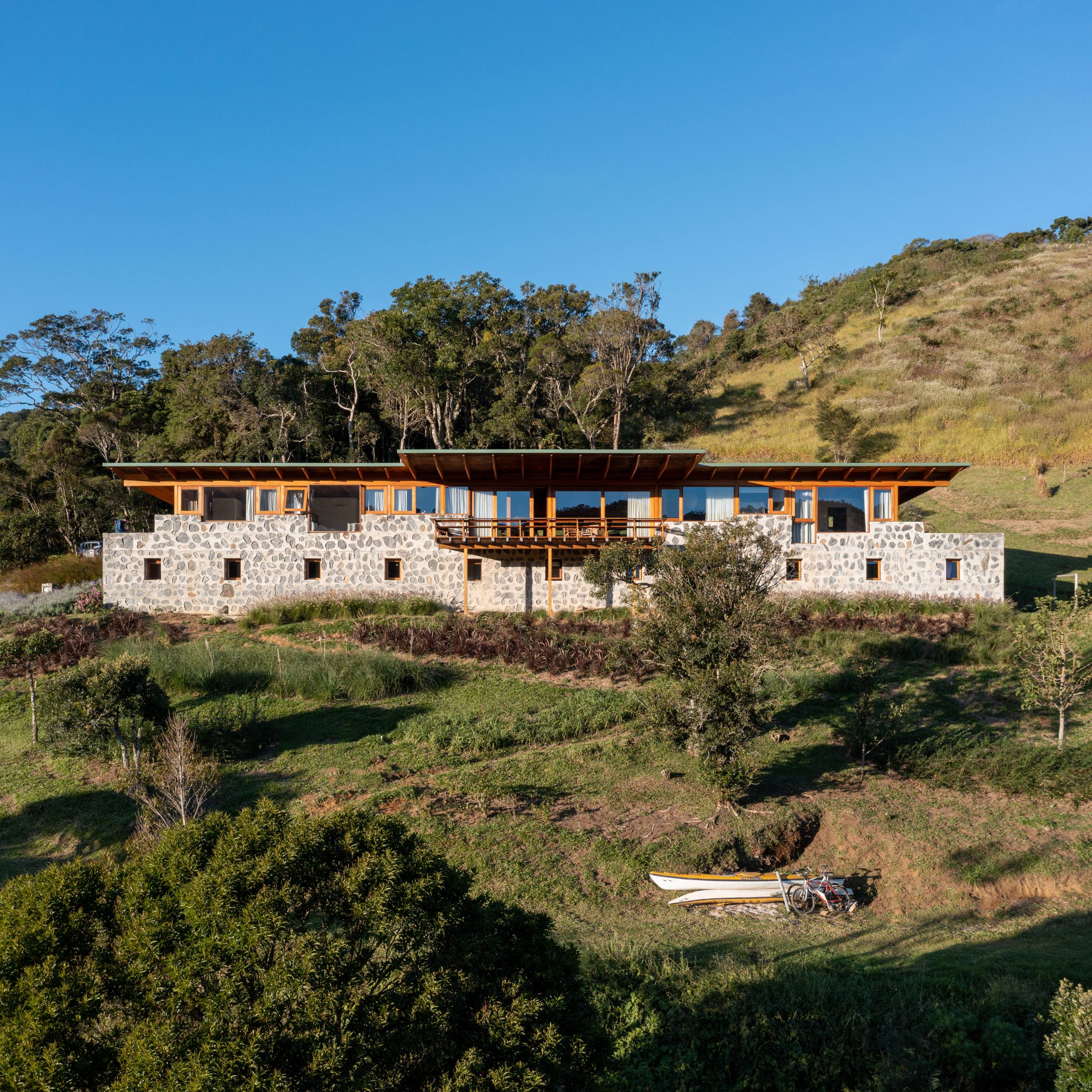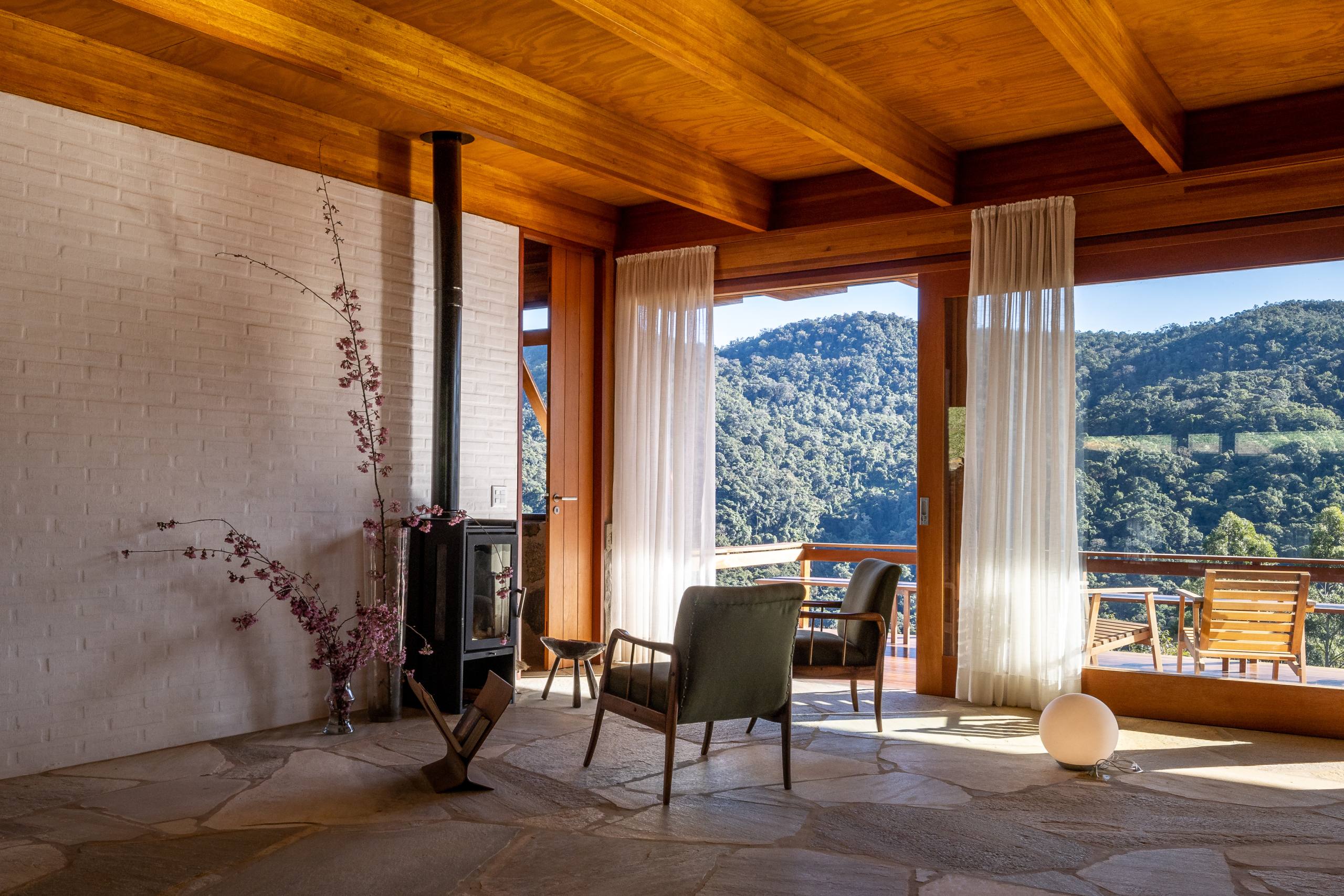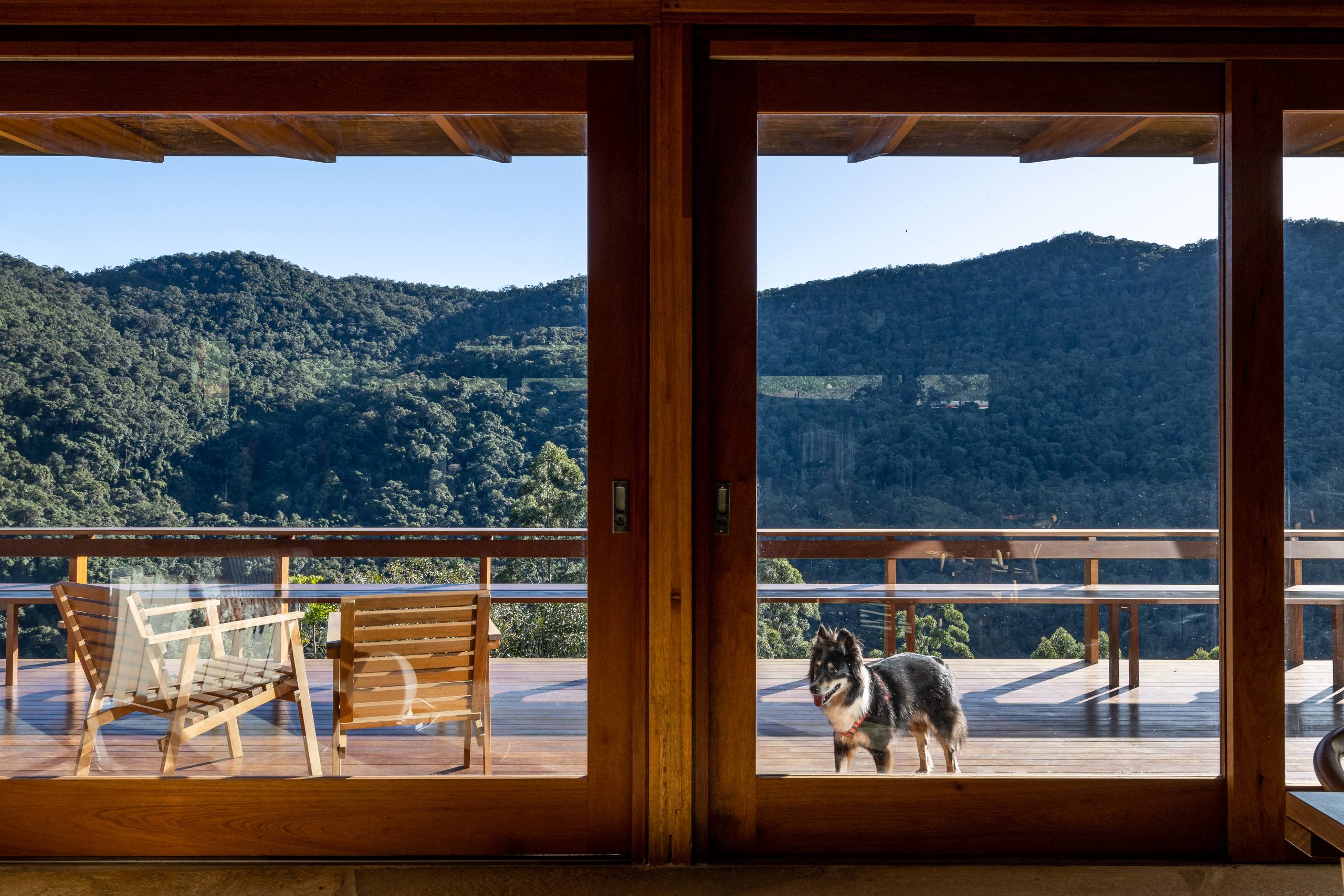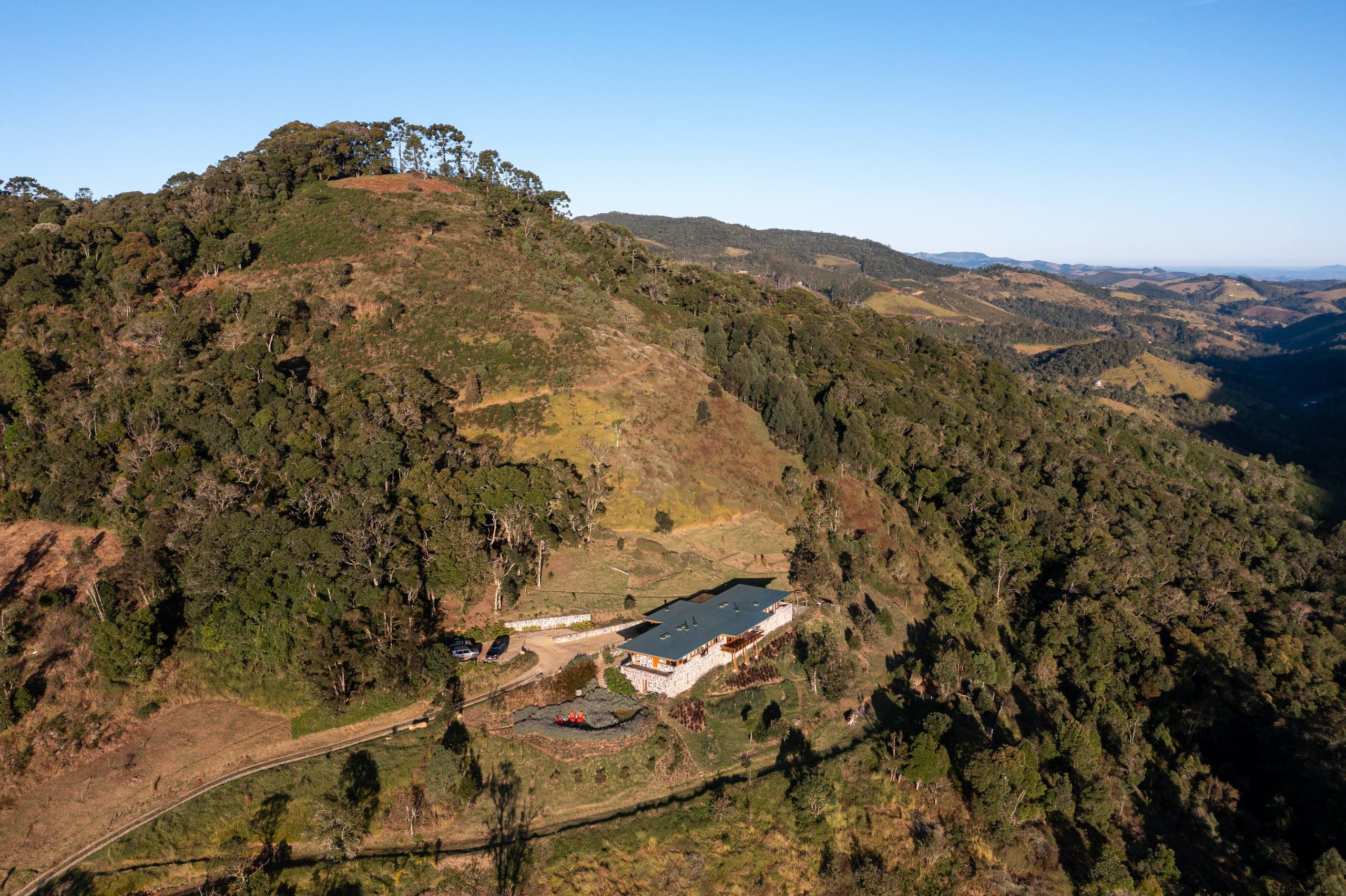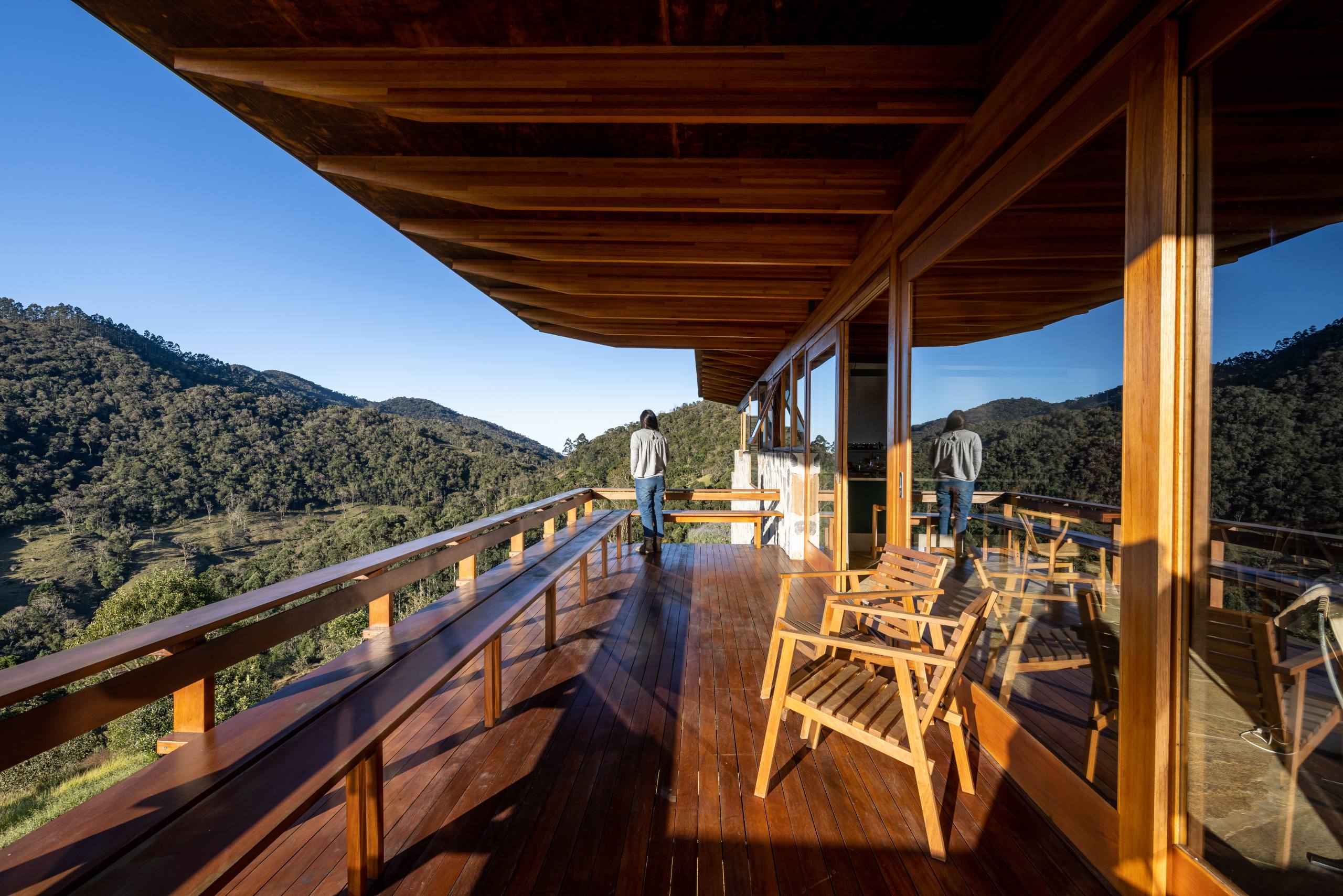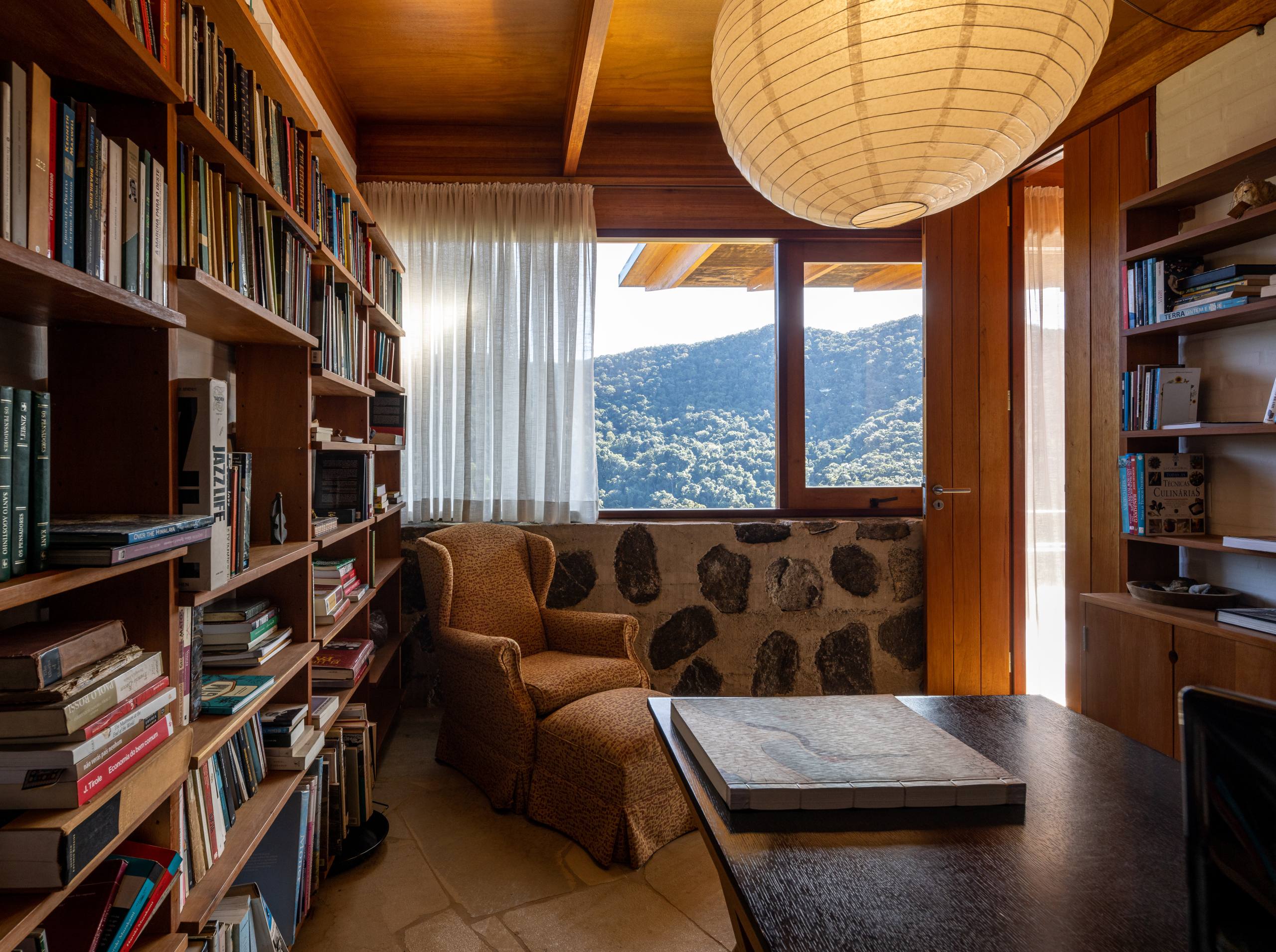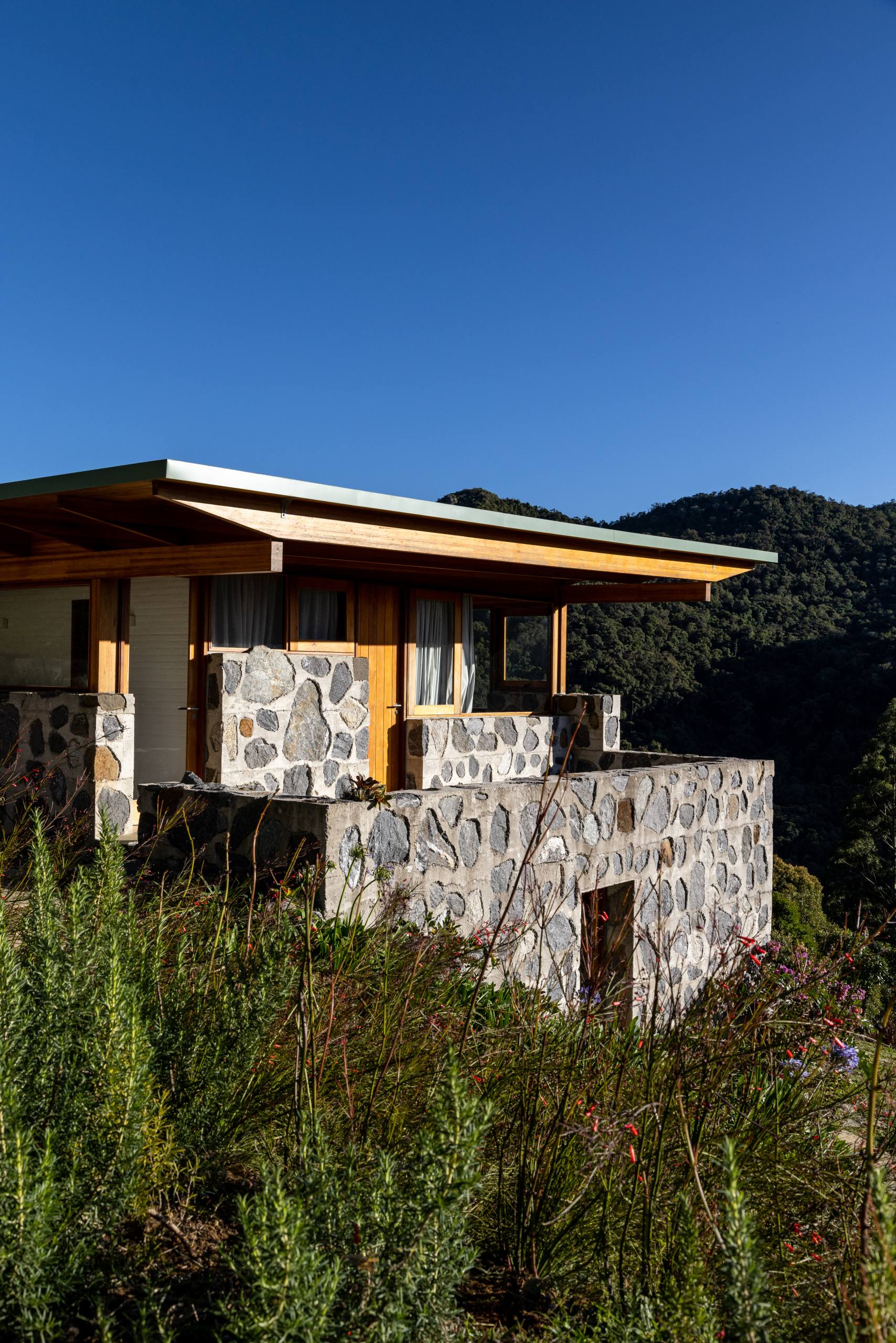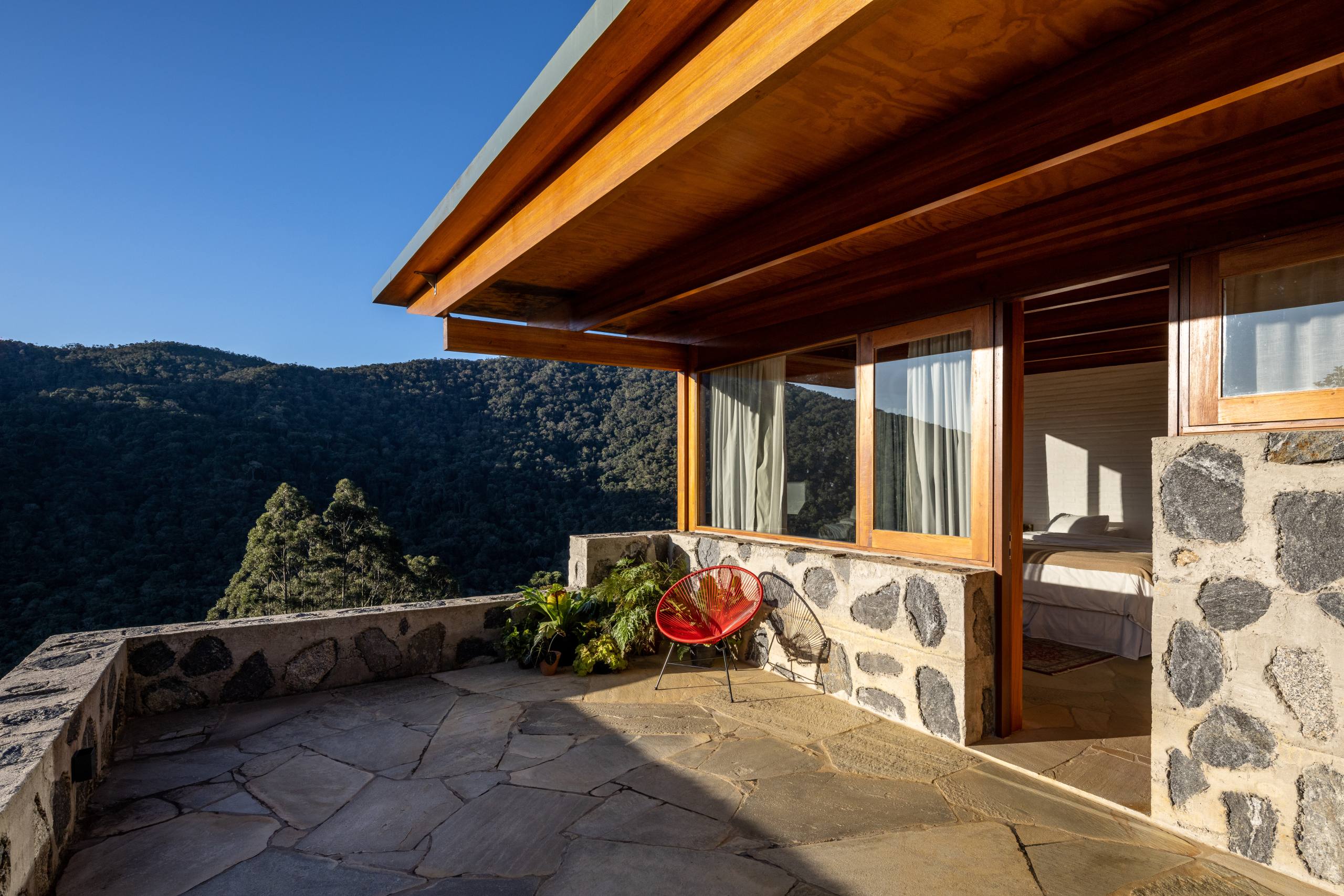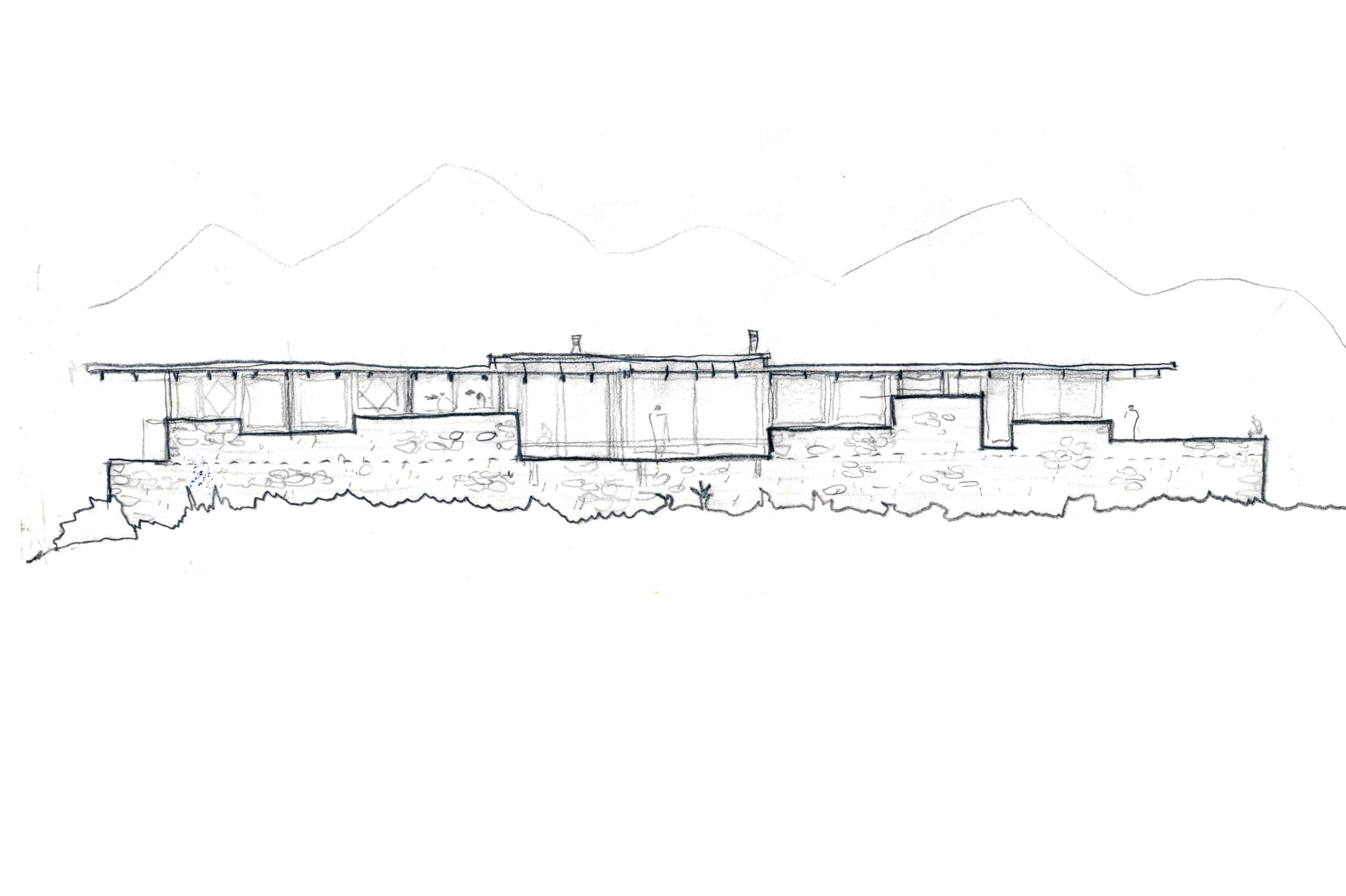Bocaina-Paraty House/
Cícero Ferraz Cruz
Fábio Mosaner
Project Details

Location(City/Country):
Paraty, Bocaina / Brazil
Tipology:
Residential
Year (Design/Construction):
- / 2022
Area (Net/Gross):
600 m2 / -
Operational Carbon emissions (B6) kgCO2e/m2/y:
-
Embodied Carbon emissions (A1-A3) kgCO2e/m2:
-- Use of natural materials throughout the building, mainly stone and timber.
- The house is located along the slope minimising the excavation works and retaining walls.
- The orientation of the main elevation allows for daylight, and long eaves prevent solar and heat gains in the hot months, as well as creating an habitable outdoor space.
Architecture is more than just construction; it is first and foremost an idea. The idea for this house was to poetically imagine a situation where the stones had always been there, rearranged by nature, like a timeless ruin. Embedded precisely in the best site, on the sunniest slope, protected from southerly winds and open to the sun from the north. Our ruin would be in the exact place, chosen after months of observation and appreciation: we are thus making a brand new ruin! This is not a delicate site plan, no. The house does not “rest” on the land, it does not touch the earth with pilotis, it is not structurally brash. It is a blunt site plan, embedded in the slope, blooming from the soil.
Well, there is nothing more to be done regarding this ruin, or nearly nothing. And that is precisely what we did. We added only what was necessary to make this ruin a home. And in opposition to what belongs to the land, in opposition to the stones, to everything placed on the ruin that came from outside, using what is most modern and rational in the civil construction industry: cross laminated timber (CLT) and glass. The nature of these materials reclaims their positions in the structure.
Here is where a long-held discussion in architecture comes up, a matter that has been developed to exhaustion since the Renaissance, yet neglected by Modernism: the articulation of the façade, the relationship between openings and enclosures, full and empty, walls between windows, walls under windows, lintels, doors and windows, alignments and misalignments. Making a window opening in a wall is one of the hardest things to do in architecture, as Souto de Moura lamented in an interview on the design of the Santa Maria do Bouro Convent: “the very idea of opening windows is hard for me, a type of childhood trauma, which is noticeable.”
Once again turning to history, our Pre-Modern and timeless ruin has regular openings that are regularly distributed across the façade, regardless of what happens inside, like a classic. While on the piano nobile, with its glass and timber, the criterion is inverted, with each windowsill having a different height, solely following internal demand, and here there is no classic articulation, but rather openings are torn out, wall by wall. The classic sequence (base + column + entablature + ledge + pediment) or the sequence for a traditional Brazilian two-story house (base + piano nobile + roof) is broken in the scheme of the façade. The basement level does not have a line or line of transition to the piano nobile. The base extends to the windowsill of the piano nobile, according to each situation. The mimesis between the pedestal and the piano nobile and the asymmetrical fluctuations of the windowsills stymie any Classicism and reduce the perception of the house’s height. This is not a classic two-story house – it is a house over a ruin.
The site location is the result of a balance of forces between the energy expended to build in a high place and the best position in relation to the sun’s path, views and accesses. Returning to the start, in the exact place where a ruin should exist.
Architects:
- Cícero Ferraz Cruz – Instagram – Cícero Ferraz Cruz
- Fábio Mosaner
Photography:
- Manuel Sá
